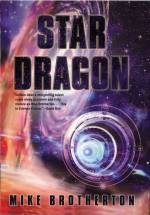Search
The Red Light District Part 2: The Light Bulb Paradox
June 9th, 2008
I had a post over the weekend where I claimed that life on a planet around a type M star (see classifications here) would be like living in a red light district. Not the sex part, just the red light part. M stars are cool as stars go, around 3000 Kelvin or a bit less, and put out most of their energy in the near-infrared, invisible to humans. What visible light is emitted is heavily skewed toward long wavelengths — red light. Simple physics, right?
Well, James Nicoll reminded me of something I had conveniently forgotten. Your typical old-fashioned light bulb operates at about 3000 Kelvin and emits a spectrum an awful lot like an M star. They look white, don’t they?
Well, yeah. That’s true. But I have also looked at M stars through telescopes and those suckers sure look red.
I’m calling this the “light bulb paradox.” Why doesn’t light from a light bulb look red? Should it? When doesn’t a spectrum correspond to the color of an object?
I’m not completely certain, but I think I’ve got some insight and an explanation, although it’s a little outside my expertise.
First, some reference material. Spectra of M stars, which, except for the very coolest M8 star do put out some blue light and do resemble the spectrum of an incandescent light bulb. For good measure, let’s also have the efficiency of the human eye as a function of color, the spectra of the sky and sunset (and light bulbs, tungsten and “full-spectrum”). Finally, a nice discussion of the perception of color.
OK, that’s a lot of stuff to get through. The key to understanding the paradox lies in the perception of color. The eye has different cells that respond to different colors (red, green, and blue, with some overlap equivalent to the bandpasses of filters we use in astronomy). When all three are sufficiently stimulated, the color is regarded as “white.” Light bulbs are intense enough that all three are sufficiently stimulated and they look white, even though the spectral shape of the tungsten filament is very similar to that of an M star in a telescope or a sunset, both of which definitely appear as shades of red. The red-detecting cone cells in these fainter light sources send a much stronger signal than those from the red and green cone cells.
So the key to the paradox is the intensity of the light. Saturating all the varieties of color-detecting cone cells results in white.
So what of our hypothetical planet orbiting an M star? It’s going to depend on the particulars of how bright and large the star appears in the sky. Let’s take an Earth-sized planet with Earth-type temperatures, ballpark. Let’s take a typical M star with half the temperature and half the radius of the sun. That will make the star emit only about 1/32 as much energy as the sun (see discussion in wiki blackbody article). This will mean that the planet has to be much closer than the distance from the Earth to the Sun (an astronomical unit). Because the radiation follows the inverse square law, it’ll have to be about 1/6 (square root of 1/32) of an AU orbital radius, and the star will look about three times bigger across than the Sun in the sky (it’s about half the size, but six times closer). Now, that’s not the only large effect, however, even though it does affect how intense the light will be as it will be spread out over an area ten times larger. Another large effect is that the spectrum is peaked in the near-infrared, and the ratio of visible light put out by the M star to that of the sun is very small (governed by Planck’s Law, again see the wiki blackbody article). Based on some plots, I’m estimating another factor of five or so, largest in the blue.
This means that the M star’s visible light surface brightness will be approximately 50 times fainter than the sun, with a larger factor at shorter wavelengths.
The discussion here suggests that the Sun at sunset is seen through 6-10 magnitudes of visual extinction at yellow colors, which corresponds to factors of a few hundred to a few thousand, order of magnitude, compared to the Sun at noon. I can look at the sun at sunset and it looks pretty dang red. If we let it get ten times brighter, that’s somewhere approaching sunset and I think the sun starts to look red before it gets all the way to sunset.
So, having said all this, I think it will come down to specific details. This order of magnitude estimate seems to put us on the boundary between what’s going to look white and what’s going to look red. The colors of plants and things and the quality of the sky and general lighting should be equivalent to what we see on Earth approaching sunset, but not quite there. It should look different, but probably not quite as different as I indicated in my original post.
Let’s call living around an M star as the “almost sunset” district.
Apparently, James, I will do other people’s homework when they disagree with me! You’re on your own for the moment with the Jovian moons.
You can follow any responses to this entry through the RSS 2.0 feed. You can leave a response, or trackback from your own site.


[…] light of the recent posts about the red M stars, as red as they’re perceived to be anyway, I wanted to bring up the issue of the non […]
[…] certain that the blueshifted objects would look blue or violet-tinged. As discussed last summer, a lot of our lights are cool and put out a lot of infrared light, but also as discussed last summer,…. Highly blueshifted objects are going to be “Doppler boosted” and brighter than […]